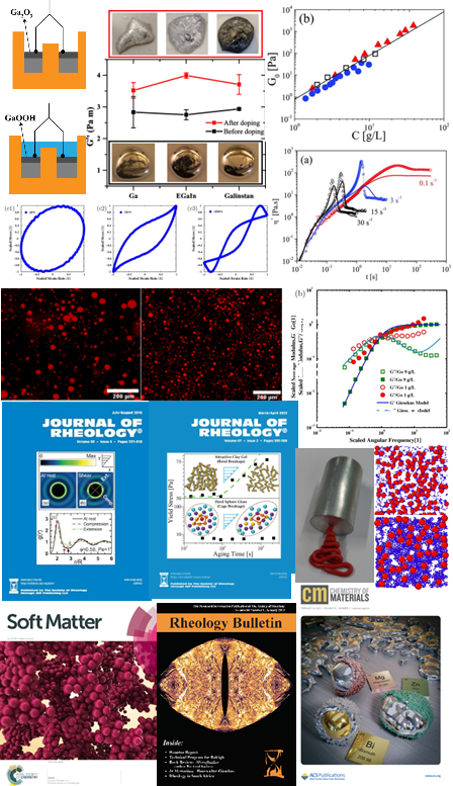 | Chemical Engineering
| Chemical Engineering
“𝝅𝜶'𝝊𝝉𝜶 𝝆𝜺𝜾 ̃ : everything flows & ‘Rheology’ is the technique used to study deformation of soft matter.”
As a member of the ‘Soft Matter Group’ my focus theme is rheology. We study the physics of flows under deformation and correlate the microstructure and dynamics to bulk flow properties. As a group we are interested in rheology of viscoelastic materials like ketchup, paste, sugar syrup & viscoplastic materials (like dough). In addition, we have interest in developing rheometric techniques and complex rheological protocols like LAOS to analyse rheological properties of soft materials. We intend to use this expertise in rheology and understand processing techniques like sheeting, spreading & 3D printing.
1. Microgel reversible thermoelectroadorption: Can colloidal microgels be used as reversible adsorbents to remove ‘charged’ contaminants from water. We study the physics of colloidal thermoelectroadsorption by PNIPAm microgels on charged contaminants.
2. Dough rheology: 2023 is celebrated as the international year of millet, a crop very suitable for semi arid regions like Telangana. Can rheology of the dough provide insights into processing methods like sheeting to facilitate commercial production of millet chapattis.
3. Rheology of plant-based butter substitutes: In order to address the sustainability food goals of UN, we are formulating a plant derived butter substitute. Extensive characterizations and rheological studies are done on in house developed formulations to identify a butter substitute that be launched into commercial market.
4. 3D printing of highly viscous material: : High energetic materials requires to be remotely 3D printed for safe operations. Rheological parameters are linked to processing characteristics like flowability and extrusion-ability, required for developing the ink cartridges and sludge formulations for additive manufacturing.

1. Kavya, M., Jacob, A. R., & Nisha, P. (2023). Pectin emulsions and emulgels: Bridging the correlation between rheology and microstructure. Food Hydrocolloids, 143, 108868.
2. Jacob, A. R., Parekh, D. P., Dickey, M. D., & Hsiao, L. C. (2019). Interfacial rheology of gallium-based liquid metals. Langmuir, 35(36), 11774-11783.
3. Jacob, A. R., Moghimi, E., & Petekidis, G. (2019). Rheological signatures of aging in hard sphere colloidal glasses. Physics of Fluids, 31(8).